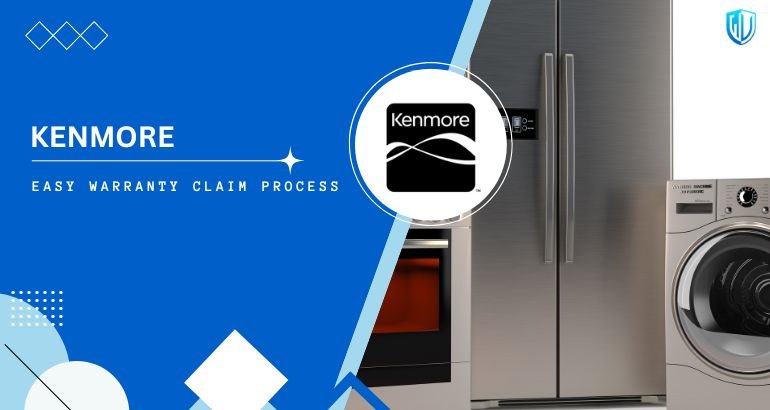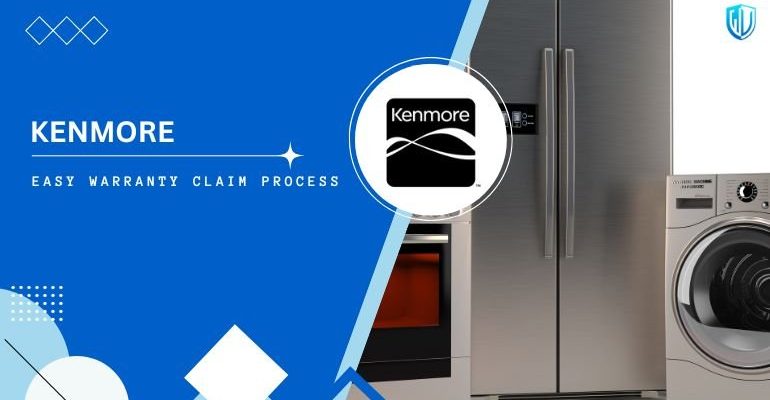
Here’s the thing: a warranty is basically a safety net for your Kenmore water heater. It’s the brand’s promise to back up their product if something major goes wrong. But when you’re actually standing in your chilly bathroom or staring at that mysterious error code, all the fine print and steps can blur together. Let me walk you through exactly how to claim a warranty—step by step—so you don’t get stuck in an endless loop of phone transfers or confusing paperwork.
What Does The Kenmore Water Heater Warranty Actually Cover?
Before you even think about starting a claim, it helps to know what you’re covered for. Honestly, not all warranties are created equal, and Kenmore water heaters are no exception. Most Kenmore water heaters come with a limited warranty that covers certain issues for a specific period—sort of like having a return ticket for your hot water if something breaks down unexpectedly.
Usually, the main things the warranty covers are manufacturing defects or problems with major parts like the tank or heating element. It won’t cover things like regular wear and tear, improper installation, or any damage caused by tinkering or using off-brand parts. If you tried to reset, code, or “troubleshoot” the heater with a sledgehammer, sorry… that’s not covered either.
You might be wondering: how long does the coverage last? Tank warranties are often good for 6–12 years, while some parts (like thermostats or valves) might only get 1–3 years. Always check your original paperwork or the sticker on your water heater for those specific details. If you can’t find them, the Kenmore website or your product manual is your next best friend.
How To Find Out If Your Kenmore Water Heater Is Still Under Warranty
So, you’re staring at your water heater, wondering if it’s old enough to vote. But is it still covered? Figuring out your Kenmore warranty status is a little like detective work, but don’t worry—it’s easy once you know what to look for.
First, get the serial number from the label on your water heater. It’s usually a long string of numbers and letters on the manufacturer’s sticker. This code is the key to unlocking all the “when and what” details about your warranty. Sometimes, the manufacturing date is hidden in the serial number itself (Kenmore often uses the first four digits to show the year and week produced).
- Locate the serial number: It’s typically on the side or front. Snap a photo if it’s hard to read.
- Check your purchase receipt: If you have the original paperwork, that’ll make things even easier.
- Find your manual: The warranty info is usually in there, too.
Once you have this info, you can call Kenmore’s warranty center or use their online portal (if available). They’ll ask for this serial number, your proof of purchase, and sometimes additional details like your address or installation date to confirm your coverage. If your heater was installed by a pro, the installer might even have a record for you.
Common Problems That Might Be Covered By Warranty
You might be asking, “Is my particular problem a warranty issue, or just something I need to fix myself?” That’s a fair question. Not every hiccup is a warranty claim—but some problems are clear-cut.
Tank leaks are probably the most common warranty trigger. If you see rust, water pooling underneath, or the insulation feels damp, that’s a red flag—and often covered. Electrical failures, like a blown thermostat or heating element that won’t reset, may also be included (especially if your model is still within the parts warranty period).
Error codes are another biggie. If you see persistent error codes after basic troubleshooting (like flipping the breaker or checking the power), don’t just keep resetting the unit. Record the code and contact Kenmore support—warranty claims sometimes hinge on those diagnostic codes for approval.
- Leaking tanks or major part failures
- Malfunctioning electrical components (especially if they won’t respond to a basic reset)
- Consistent error codes after normal troubleshooting steps
What’s not covered? If the problem was caused by installation mistakes, hard water buildup, accidental damage, or using the wrong battery in the remote (if your model has one), chances are the warranty won’t apply.
Step-By-Step: How To Start Your Kenmore Water Heater Warranty Claim
Alright, time for action. Here’s exactly what you need to do—no jargon, no runaround.
- Gather your info: Serial number, model number, purchase receipt, installation date, and a description of the issue. If there’s a visible problem (like a leak), snap clear photos.
- Contact Kenmore support: Call their warranty hotline or start a claim online. Be ready to provide your info calmly (even if your patience is running thin).
- Explain your problem: Be specific. For example, “My water heater is leaking from the bottom after giving an error code. I’ve already tried the reset, and it didn’t fix it.”
- Follow their troubleshooting steps: Sometimes, support will walk you through a few tests—checking breakers, trying a reset, or reading another code. Even if you’ve already done this, play along. It’s part of the process.
- Get your claim number: Write this down. It’s like your golden ticket for all future updates and communication.
If you’re feeling overwhelmed, remember: Kenmore support agents handle these calls every day. Be polite but persistent. It’s their job to help you through the process, step by step.
What Happens Next? The Warranty Claim Process Explained
So, you’ve filed your claim. Now what? Here’s where patience comes in. After you submit your claim and details, Kenmore may send out a technician to inspect the water heater—especially for big issues like leaks. Sometimes, they’ll ask for photos or additional info before moving forward.
If your claim checks out, Kenmore will either repair the unit, replace it, or (less commonly) give you a partial refund for a new one. The exact outcome depends on your warranty’s fine print, the age of your water heater, and the nature of the problem. For example, tanks under a long-term warranty might be swapped entirely, while a faulty valve could just get replaced.
Keep in mind—physical damage, improper installation, or lack of maintenance can void the warranty. If you did your own workaround or skipped the installer sync step on a certain model, be transparent. Honesty really does pay off here.
Expect the entire process to take anywhere from a few days to a few weeks, depending on technician scheduling and part availability. Stay organized by saving emails, text updates, and your claim number in one place.
Tips To Make Your Warranty Claim Smoother (And Faster)
Want to avoid the classic customer service loop? Here are a few things that can make the warranty claim process a whole lot smoother:
- Document everything: Photos, error codes, past repair attempts, and receipts. It’s much easier with all the facts at your fingertips.
- Stay patient (but persistent): If you don’t hear back within a week, call or check the online claim portal. Don’t wait for them to chase you.
- Don’t do unauthorized repairs: If you call in a third-party to fix something before Kenmore looks at it, you might accidentally void your warranty. Check the rules first.
- Be clear and concise: When describing the problem, stick to the facts. “My heater keeps shutting off with error code E02. I’ve reset the breaker, replaced the battery in the remote, and it still won’t work.”
One little story: A friend of mine waited a month for a claim, only to learn the technician was missing his address because of one typo on the claim form. Double-check your info—sometimes it’s the tiny details that trip things up.
Comparing Kenmore Water Heater Warranties With Alternatives
It’s worth asking, “Are Kenmore water heater warranties better or worse than other brands?” Honestly, they’re pretty similar to most major water heater warranties—offering several years on tanks and a few years on parts.
Universal water heater warranties sometimes offer more flexibility if you’re dealing with off-brand repairs or can’t get original parts. But, sticking with the Kenmore warranty is almost always better for major problems, since you’ll get matched, original parts and support from people who know your specific model inside and out.
If you’re thinking about swapping your Kenmore for another brand in the future, check what each company covers (and for how long) before you buy. Sometimes, a slightly pricier option might give you a longer safety net—or vice versa.
What If Your Kenmore Warranty Has Expired?
Full disclosure: if your warranty’s expired, you won’t be able to claim manufacturer repairs or replacements through Kenmore. But don’t stress—there are still options.
You can always call a qualified repair tech to troubleshoot and fix most issues. Some local appliance shops have experience with Kenmore water heaters, even after the warranty’s up. If you’re really handy, you might find universal replacement parts online, but make sure they match your model exactly—an ill-fitting part can cause even bigger headaches.
If multiple key parts are failing or you’re seeing leaks, it might be time to retire the tank and invest in a new water heater. A fresh model will give you a new warranty, better energy efficiency, and peace of mind.
Wrapping Up: Staying Warm (And Smart) With Your Kenmore Water Heater Warranty
Claiming a warranty for your Kenmore water heater doesn’t have to be a puzzle. Once you know what the warranty covers, how to check your coverage, and the exact steps to file, you’re in control—no cold showers, no guessing games. Don’t forget to keep records, ask questions if you’re stuck, and take photos of any issues.
And if your warranty is still good, let it work for you. After all, you paid for that safety net. With a little patience and the right info, you’ll be back to hot, comfortable showers in no time. Stay organized, stay persistent, and remember: every step you take keeps the process smooth—and makes things less chilly for you (and your toes) down the line.
